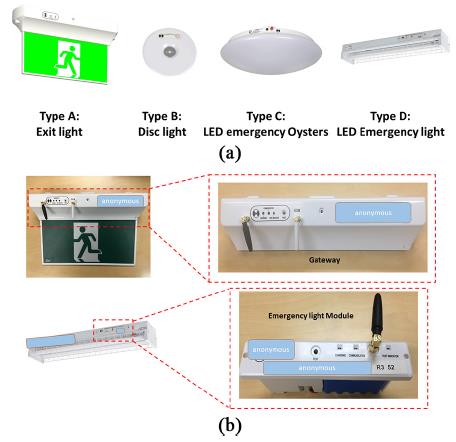Publications:
1. Jin Zhang. “Walk Direction and Human Identification using WiFi signal” to be published 2020
2. Jin Zhang. “Act-ID: Human Identification Through Activities Using WiFi signals” to be published 2020
3. Jin Zhang. “WiEnhance: Towards Data Augmentation in Human Activity Recognition using WiFi signal” to be published in International Conference on Mobile Ad-hoc and Sensor Networks, 2019
4. Syed W. Shah, Salil S. Kanhere, Jin Zhang and Lina Yao. “A Deep Learning Approach to Vein Pattern Based Human Identification” to be published 2019
5. Weitao Xu, Jin Zhang, Jun Young Kim, Walter Huang, Salil Kanhere, Sanjay Jha, Wen Hu. “The Design, Implementation, and Deployment of a Smart Lighting System for Smart Buildings.” accepted to IEEE Internet Of Things Journal, 2019
6. Jin Zhang, Weitao Xu, Wen Hu, and Salil S Kanhere, "Wicare: Towards in-situ breath monitoring.", accepted to Proceedings of the 14th International Conference on Mobile and Ubiquitous Systems: Computing, Networking and Services (Mobiquitous). ACM, 2017.
7. Jin Zhang, Bo Wei, Wen Hu, Salil S. Kanhere, "WiFi-ID: Human Identification using WiFi signal ", accepted to Distributed Computing in Sensor Systems (DCOSS), IEEE International Conference 2016.
8. Jin Zhang, Bo Wei, Wen Hu, Salil S. Kanhere Ariel Ten, "Human Identification using WiFi signal ", accepted to Pervasive Computing and Communications (PerCom), IEEE International Conference 2016. (Demo Abstract)
9. Jin Zhang, Andreas Reinhardt, Wen Hu, Salil S. Kanhere, "RFT: Identifying Suitable Neighbors for Concurrent Transmissions in Point-to-Point Communications", accepted to The 18th ACM International Conference on Modeling, Analysis and Simulation of Wireless and Mobile Systems, MSWiM 2015.
10. Jin Zhang, Kai Li, Andreas Reinhardt, Salil S. Kanhere, "AGRO - Optimal Routing with Low Latency and Energy Consumption in WSN with Aerial Relay Nodes", accepted to the 11th European Conference on Wireless Sensor Networks, EWSN 2014. (Poster Abstract)
11. Andreas Reinhardt, Delphine Christin, Kai Li, Salil S. Kanhere, Jin Zhang, "Smarter Buildings for the Smart Grid? Let Them Forecast Their Power Consumption,"
IEEE Local Computer Networks Conference (LCN), Oct. 2013. (Demo Abstract, Best Demo Award)
Projects:
利用WiFi感知人体 WiFi human sensing
我们采集61人的45种动作数据集,该数据集每种动作包含2个WiFi接收器,Act-ID论文利用此数据集可以有效识别40人以内的人体身份。
We recuited 61 individuals for collecting 45 types of activities. Each activities contain WiFi CSI data from two receivers.
Act-ID exploits this dataset for human Identification and have good performance within 40 number of individuals.
[Read more]
相关论文 Related paper:
1. Walk Direction and Human Identification using WiFi signal
2. WiEnhance: Towards Data Augmentation in Human Activity Recognition using WiFi signal
3. Act-ID: Human Identification Through Activities Using WiFi signals
4. Wicare: Towards in-situ breath monitoring.
5. WiFi-ID: Human Identification using WiFi signal
请在Youtube里看此篇论文介绍视频 Please watch the video in Youtube. link


基于LoRa自组网的智能应急灯系统 Smart emergency lights using LoRa.
There is an increasing interest in Internet of Things
(IoT) enabled smart buildings over the past decades. However, the
development of smart buildings is impeded by the high installation/
maintenance cost and the difficulty of large-scale evaluation
in the wild. In this paper, we report the design, implementation,
and deployment of an emergency light-based smart building solution.
The key advantage of the system is that it is built on the top
of the existing facilities in the building (i.e., emergency light). As a
case study, we have implemented and deployed our system in nine
production smart buildings of different types including residential,
commercial office, and warehouse of multiple level building
complexes. Using real data from four typical buildings, we show
the proposed system can achieve >97% average packet delivery
rate.
相关论文 Related paper:
1. The Design, Implementation, and Deployment of a Smart Lighting System for Smart Buildings
2. RFT: Identifying Suitable Neighbors for Concurrent Transmissions in Point-to-Point Communications
